Neurofeedback, also known as EEG biofeedback, is a non-invasive therapeutic intervention that uses real-time monitoring of brain activity to teach self-regulation of brain function. This process can potentially improve various cognitive and emotional states. This technique has garnered attention for its potential applications in cognitive support, mental health treatment, and specific conditions like ADHD. However, its efficacy remains a topic of ongoing research and debate.
Understanding EEG and Brain Waves
Electroencephalography (EEG): EEG is a method used to record electrical activity in the brain. By placing small electrodes on the scalp, EEG captures the brain's electrical signals, which are generated by the firing of neurons. These signals are then translated into brain wave patterns that can be analyzed.
Brain Waves: Brain waves are rhythmic patterns of electrical activity in the brain. They are categorized based on their frequency:
Delta Waves (0.5-4 Hz): Associated with deep sleep and restorative processes.
Theta Waves (4-8 Hz): Linked to creativity, intuition, and daydreaming. In excess, they are often associated with inattention.
Alpha Waves (8-12 Hz): Present during relaxed, meditative states.
Beta Waves (12-30 Hz): Related to active thinking, focus, and problem-solving.
Gamma Waves (30-100 Hz): Involved in high-level information processing and cognitive functioning.
How Neurofeedback Works
Neurofeedback involves several steps to ensure it effectively addresses the individual's specific needs:
Initial Assessment: A comprehensive clinical interview and a baseline EEG recording to understand the individual's brain activity and symptoms.
Protocol Development: A personalized treatment plan is created, targeting specific brain wave frequencies to address the individual's needs.
Neurofeedback Sessions:
Preparation: Electrodes are placed on the scalp to monitor brain activity.
Real-Time Feedback: The individual receives visual or auditory feedback, such as playing a video game or watching a movie that responds to their brain activity. For example, if the brain produces the desired waves, the movie continues to play; if not, it pauses. Sessions typically last 30-60 minutes and are held 1-3 times per week.
Monitoring and Adjusting: The clinician regularly reviews progress and adjusts the protocol as needed to ensure effectiveness.
Duration and Completion: Treatment usually involves 20-40 sessions, but the number can vary. Follow-up sessions may be recommended to maintain the benefits.
Neurofeedback aims to help individuals learn to self-regulate their brain activity, leading to lasting improvements in symptoms and overall brain function.
Supported Uses of Neurofeedback
ADHD (Attention-Deficit/Hyperactivity Disorder)
Research Support: Neurofeedback has been extensively studied as a treatment for ADHD. Recent meta-analyses and systematic reviews indicate that neurofeedback can lead to significant improvements in attention, impulse control, and hyperactivity. These effects are comparable to those of stimulant medications like methylphenidate, especially when assessed by parents and teachers (SpringerLink) (SpringerLink).
Mechanism: The intervention typically involves training individuals to increase beta waves and decrease theta waves, a pattern associated with improved attention and reduced hyperactivity.
Anxiety and Stress Reduction
Research Support: Neurofeedback has shown promise in reducing anxiety and stress. Studies indicate that it can help individuals learn to regulate their brain activity, promoting a state of relaxation and reducing symptoms of anxiety. Clinical trials have demonstrated reductions in generalized anxiety disorder (GAD) symptoms following neurofeedback training (SpringerLink).
Mechanism: By training individuals to increase alpha waves or other brain wave patterns associated with calm and relaxation, neurofeedback helps in managing anxiety.
Cognitive Enhancement
Research Support: Some research supports the use of neurofeedback for cognitive enhancement in healthy individuals and those with cognitive impairments. For instance, neurofeedback training has been associated with improvements in working memory, attention, and executive function (SpringerLink).
Mechanism: By optimizing specific brain wave patterns, neurofeedback may enhance neuroplasticity and cognitive function.
Unsupported or Controversial Uses
Depression
Research Limitation: While some studies suggest neurofeedback might help in managing depression, the evidence is not conclusive. Systematic reviews and meta-analyses have highlighted the need for more rigorous, larger-scale studies to establish its efficacy (SpringerLink) (SpringerLink).
Current Consensus: Neurofeedback for depression remains an experimental treatment, with inconsistent findings across studies.
Autism Spectrum Disorder (ASD)
Research Limitation: Neurofeedback has been explored as a treatment for ASD, aiming to improve social behaviors and cognitive function. However, the results are mixed, and many studies suffer from methodological weaknesses such as small sample sizes and lack of control groups (SpringerLink) (SpringerLink).
Current Consensus: While some anecdotal reports and preliminary studies are promising, more robust evidence is needed to support the use of neurofeedback for ASD.
Post-Traumatic Stress Disorder (PTSD)
Research Limitation: There is some evidence that neurofeedback can help individuals with PTSD by promoting self-regulation of brain activity. However, studies are still in early stages, and findings are not yet robust enough to recommend it as a standard treatment (SpringerLink) (SpringerLink).
Current Consensus: Neurofeedback for PTSD should be considered experimental until more high-quality research is available.
Conclusion
Neurofeedback holds promise for various applications, particularly in treating ADHD and anxiety, and potentially in cognitive enhancement. However, its efficacy for other conditions like depression, ASD, and PTSD remains uncertain due to limited and inconsistent research findings. Continued research, including larger, well-controlled studies, is necessary to fully understand the potential and limitations of neurofeedback in clinical practice. As with any therapeutic intervention, it is crucial to rely on evidence-based practices and to approach new treatments with a critical eye, ensuring they meet rigorous standards of efficacy and safety (SpringerLink) (SpringerLink).




